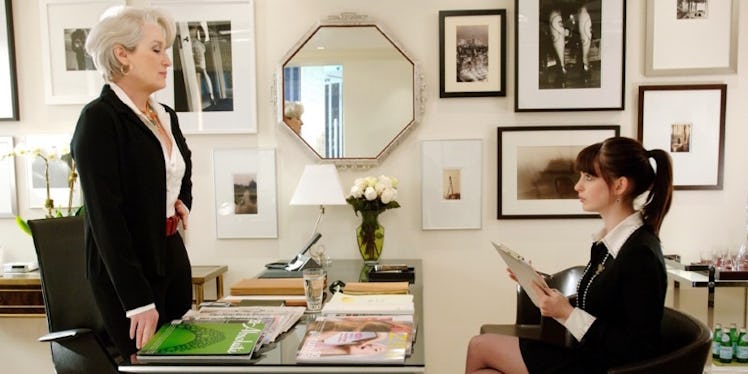
Bringing This One Simple Thing To An Interview Scored Me The Job
Interviews are both a blessing and a curse. Sure, you're one step closer to getting the job you want, but you still have to sit down with a stranger for an uncomfortable Q&A session with a very vague idea of what it is they're looking for.
And of course, employers have so many candidates they're looking at that you have to figure out how to grab their attention and make it to the top of their list.
I quickly realized while I was job-seeking there was one thing I could bring to my interview that would impress my potential employers, and guarantee I would be a top contender for the job.
Although my resume detailed all of my skills, I didn't feel it reflected the full scope of what I was capable of. I had so much hands-on experience I couldn't go into in my resume that complemented the job I was interviewing for.
Of course, an interview would allow me to go into detail in person, but I felt like talking couldn't compare at all to actually illustrating my background. I love using visuals to explain things and give people a better understanding of what I'm trying to convey.
I decided to put together a portfolio that would provide proof and visual examples of my experience.
The employer was impressed, and I got the job.
I've shared this nugget of wisdom with friends in different types of industries, but some felt a portfolio was only appropriate for specific career paths.
I'd argue a portfolio could benefit anyone who's interested in highlighting their experience, regardless of what type of career path they're pursuing.
There are ways to make a portfolio work for people who don't have anything in writing to present to their interviewer.
For instance, consider my friend who reached out to me after she landed an interview in healthcare for a promotion.
Her entry-level position had provided her with hands-on experience in insurance verification, authorizations and customer service, but she didn't know how to present this information to show she would be the best candidate for a managerial position in financial counseling.
When I sat down with her to create the portfolio, I had her create tabs based on the main areas of interest that pertained to the position she was applying to. We used the job post as a reference.
They wanted someone who knew a great deal about Medicaid, so there was an entire section devoted to the topic. She elaborated on how she had interacted with the insurance in her present position, and displayed relevant facts that she knew about the insurance.
We added images, colorful tables,and organized text, so it wasn't a laundry list of boring details, but an engaging and interesting spread of information.
Even though there were a ton of other candidates clawing for the position, she got the job.
Not only does a portfolio allow you to expand on your know-how, but it shows you took an extra step in trying to impress a prospective employer.
The act of creating the portfolio itself further demonstrates you're organized, creative, self-motivated and an excellent communicator.
So, what's the easiest way to make a portfolio?
Using PowerPoint, I was able to customize the pages and create a really impressive presentation. All of the tutorials you need to make your PowerPoint presentation stunning are just a Google search away.
Once you have a cover sheet and a page-by-page breakdown of your skills, you can save the file to PDF and send it to Fedex. The binder option allows you to create a portfolio that has a frosted cover, tabs and coil binding, -- plus, it'll print your pages in color.
Also, you have the option to pick up the portfolio in person or have it mailed. Just don't forget to make two copies, so you can read along with the hiring manager.
So, the next time you have an interview and you're gunning for that job so bad you can taste it, prepare by making a portfolio. It just might give you the leg up you need to smash the competition.